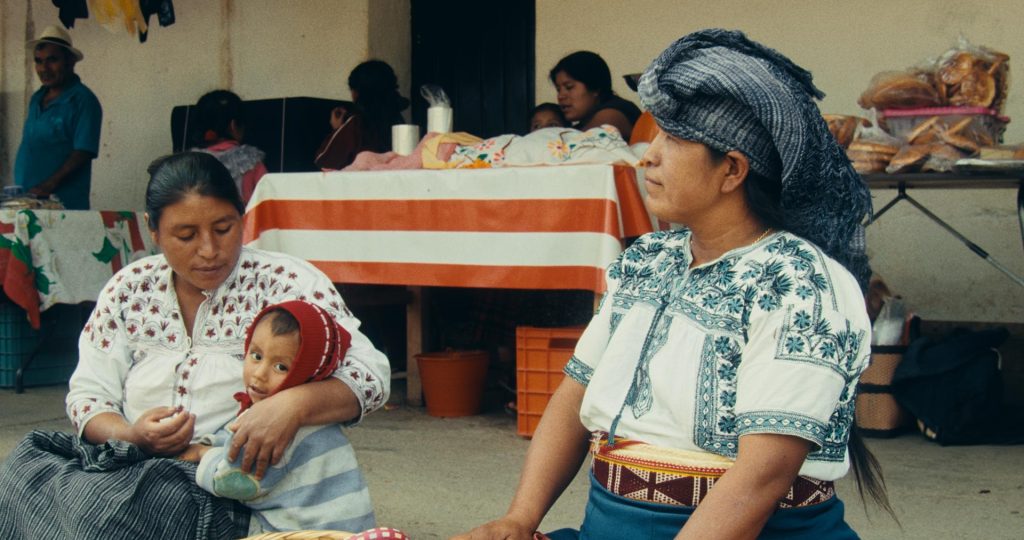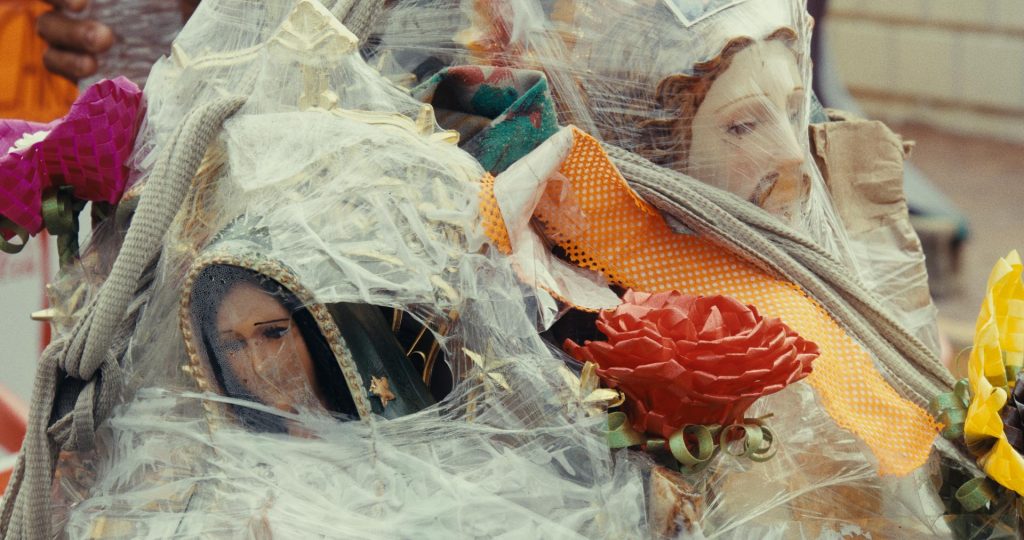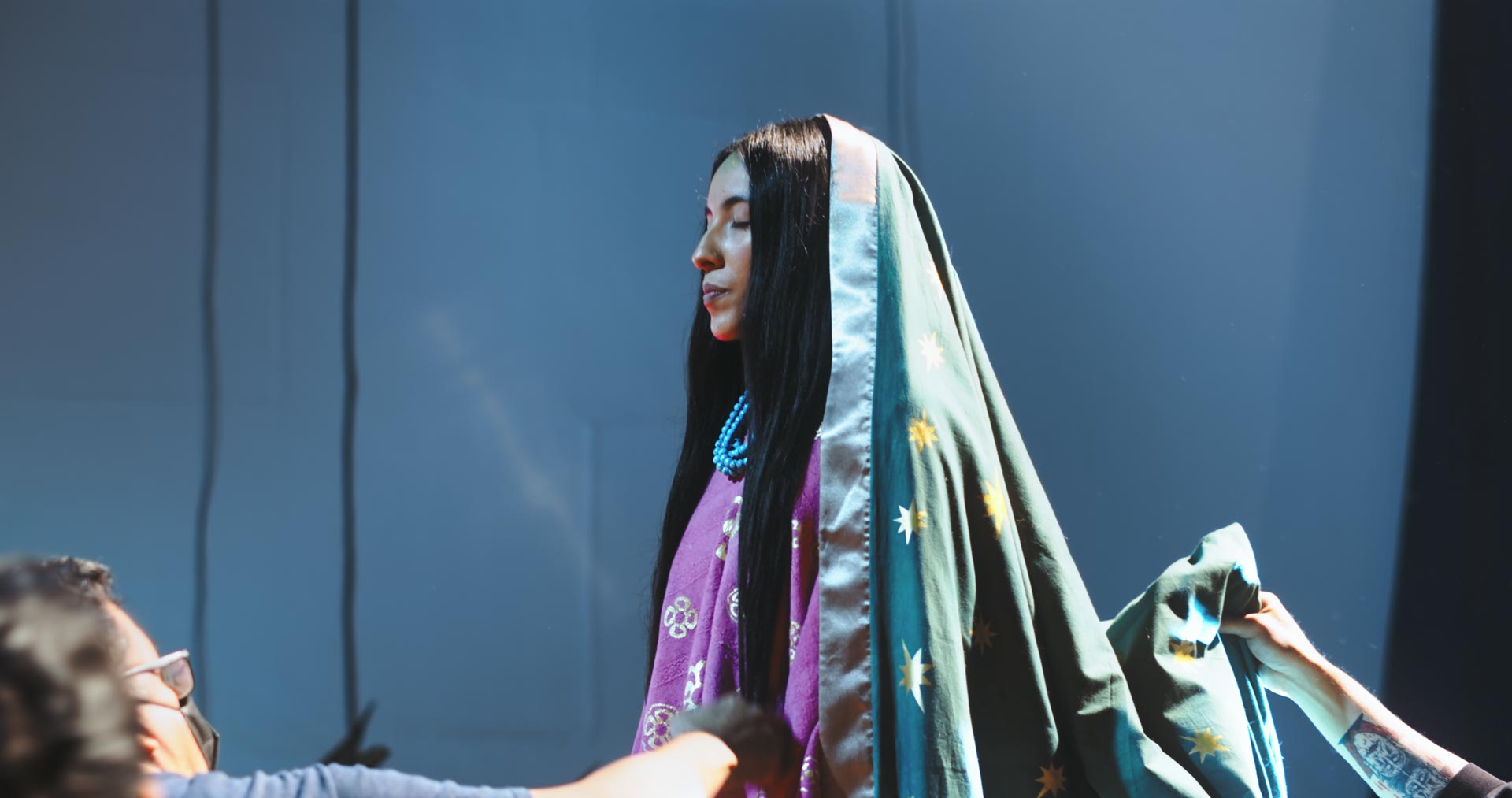“The mother of Guadalupe has always existed in my family, since my grandparents, since my ancestors,” one man told the documentary filmmakers of “Tonantzin Guadalupe” standing outside his chicken rotisserie business in Mexico City.
“We’ve always been protected by her,” he said with a smile, looking over at the brown-skinned statue he venerates. “That’s why we have her with her little lights, with her flowers.”
Jesús Manuel Muñoz’s latest film, “Tonantzin Guadalupe,” demystifies the origin story of the adored Virgin of Guadalupe through a historical lens that seeks to illustrate how “the power of stories” led to the creation of Mexico as a nation.
Over 20 million people visit the patroness at the Basilica of Our Lady of Guadalupe in Mexico City every year, but not many know its complex origins.
The narrative that has dominated popular culture has been of Juan Diego and his rose-filled tilma, which revealed the miraculous image of the virgin in 1531.
But Yohualli López, a Nahua translator and ritual dancer featured in the film, said Tonantzin was the mother earth goddess indigenous communities worshiped at Tepeyac Hill before the Virgin of Guadalupe, widely recognized today.
This story of Juan Diego and the Virgin of Guadalupe was first documented in 1556 in the “Nican Mopohua,” a text originally written in Nahua that was one of the many texts used as Christian theater by Spaniards to evangelize communities throughout the 16th century.

Over 20 million people visit the patroness at the Basilica of Our Lady of Guadalupe in Mexico City every year.
Photo: David Molina

The Mixe indigenous community in Tlahuitoltepec, Oaxaca, Mexico, were never subdued militarily by the Spaniards.
Photo: David Molina
“The ‘Nican Mopohua’ is not endorsed by us indigenous people,” López said. “The ‘Nican Mopohua’ is held by the religious institution that was implanted here in the 16th century and sustained by the highest ranks of power since the 16th century.”
Though it wasn’t until 1649, 118 years after the 1531 Virgin of Guadalupe apparitions, that the New Spain church started “pushing this story deliberately” onto its population, Muñoz said.
This was because New Spain wanted to show they were not “a second-rate territory in relation to Spain. They were as important as Spain, so much so that the mother of God had appeared here,” Muñoz explained.
There were many versions of the virgin in Spain at that point including La Virgen De Extremadura and La Virgen de los Remedios, according to historians.
“But it started gaining traction as the local virgin and as a source of local or national pride,” because it had “a lot of elements of indigenous cultures [like] the roses, the birds,” Muñoz said.
Dr. Rodrigo Martínez Baracs, a historian interviewed in the film, said the fusion of New Spanish and indigenous culture as depicted through the image of the Virgin of Guadalupe “strengthened the feeling of Mexican identity,” among the population.
“It became the source of nationalism in Mexico, so much so that the first flag of Mexico is the Virgin of Guadalupe,” Muñoz explained, referencing the 1810 banner used during the war of independence.

Statues of the Virgin Guadalupe brought to the Basilica of Our Lady of Guadalupe in Mexico City on Dec. 12, a time of year when millions of people venerate the patroness.
Photo: David Molina
Muñoz said he remembers being shocked when he read about La Virgen De Extremadura for the first time over 25 years ago instead of the Guadalupe he grew up with living in Ciudad Juárez.
“I thought our Mexican Virgin of Guadalupe was the first and the only,” he said.
The film director has since left his religious roots, but he said he made it a priority in his film to “respect the faith” of viewers while presenting them with information.
“Even though I am not religious, I am agnostic. It doesn’t mean that the people who believe in the Virgin and have faith in Christianity aren’t valid,” Muñoz said.
At the heart of his artistic vision, Muñoz said he wants people to reflect on the distinction between histories and stories.
“Stories are made to convince you of a message,” he said. “But they are so powerful that they can create a reality that ends up being as true as the truth, like having faith, like believing in the Virgin of Guadalupe, like believing that I am Mexican.”
You can watch ‘Tonantzin Guadalupe’ at these locations.
